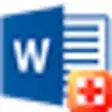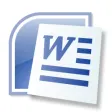Microsoft Office 2010 for Windows
- By Microsoft
- Trial version
- User Rating
Used Microsoft Office 2010 for Windows?
Editors’ Review
The world has changed plenty since Microsoft introduced Office 2007. In that time, Google has become a major player, with its suite of online tools, and even Apple has made inroads with its iWork office suite, though admittedly within a smaller set of computer users. Even with the vast user base of Microsoft Office products, with new competitors in the market, Microsoft Office 2010 needed to be good.
Playing catch-up and looking forward simultaneously, Microsoft tries, in Office 2010, to remain (or become) the central hub of your working life, letting you use your PC, smartphone, and the Web to make your projects come together more efficiently.
It's true: every application in the suite has been improved and tweaked in an effort to make your busy days more efficient, but you'll need to be ready for a learning curve to get accustomed to Office 2010's changes.
This update isn't for everyone; if you're a power user who has a specific way you like to do things and want all the same functionality as an older version of Microsoft Office, then you can probably get by on an older version. Just like with Office 2007, however, Office 2003 or earlier versions of the suite will need conversion tools to open many of the now default Open XML file types.
But if you are eager to try out new time-saving features and are willing to spend some time learning where everything is, we think you will appreciate this major update. Even new users of productivity suites and students looking for a solid set of productivity apps will benefit from the new features in Office 2010--and surely the Academic license is more than reasonable for what you get.
One of the major new changes to the suite is the ability to collaborate and share your work using Web apps. You can collaborate using Web apps over your SkyDrive (25GB of available online storage) on Windows Live.
You may also be able to collaborate with a coworker using a slimmed down Facebook-connected version of the Web apps, however, Microsoft representatives explained to us that the Facebook-connected version we saw in the company demo is only a pilot program to test social media features. As is, having two ways to connect seems a bit confusing to us, but we'll reserve judgment until the bugs are ironed out.
We reviewed Office 2010 Professional, which costs a substantial $499. This suite includes Word, Excel, PowerPoint, OneNote, Outlook, Publisher, and Access, in addition to SharePoint Workspace for collaborative tools, and InfoPath Designer for standardized forms.
If you don't need desktop e-mail, you should opt for the lowest tier Office, Home & Student at $149, which includes Word, Excel, PowerPoint, and OneNote. Office 2010 Home and Business adds Outlook 2010 to the Home and Student version and costs $279. Office Professional Academic 2010 is available through authorized academic resellers only and costs $99. Unfortunately, there is no upgrade pricing for Microsoft Office 2010, because Microsoft found that most people buy Office when they buy a new computer and there was little interest in upgrades at retail outlets.
We installed Office 2010 on two different test machines, one running Windows 11 and the other running Windows 10. In both cases the standard installation was fairly painless, clocking in at less than 5 minutes from start to finish. Requirements to run Office 2010 vary depending on which operating system you're running, but you'll need at the very least a 500MHz processor or higher, 256MB of RAM (512MB recommended to use more advanced features), and Windows XP with Service Pack (SP) 3 (32-bit).
Connectivity to Microsoft Exchange 2000 Server or later is required for certain advanced functionality in Office Outlook 2010. Instant Search with options that appear as you type requires Windows Desktop Search 3.0. You will also need Windows Server 2003 with SP1 or later running Windows SharePoint Services if you want to use the more advanced collaboration tools. We were happy to see that Office 2010 didn't litter our desktop with new shortcut icons, leaving it up to us how we wanted to launch the suite.
Interface
The Ribbon has returned in Office 2010 (first introduced in Office 2007) and now is offered in all the applications in suite. There was plenty of resistance among users to the introduction of the Ribbon in Office 2007 across only a few core applications, and now you will be faced with these changes across all the apps. We can only suggest to those that are still resistant to the Ribbon that, with time, the cross-application functionality becomes very useful. The Ribbon now changes based on what feature you're using at the time and you have the ability to add or remove features to any Ribbon if you need certain features for your specific workflow. Just like in Office 2007, there's a core set of always-on tabs in the Ribbon, as well as contextual tabs that appear only when the software detects that you need them. Picture formatting tools, for example, show up as a tab only if you select an image in your document.
One of the more jarring changes is the file menu that will now take you to a full-page document management section called Backstage. Like the old file menu (or logo menu) you'll be able to open, save, and print your documents from Backstage, but now Microsoft has added a slew of features to help you with the next steps for your document. You can set permissions to lock down your changes--including password-protected document encryption--create access restrictions for specific users, and include an invisible digital signature to ensure the integrity of the document.
Save and send features (sharing) are also found in Backstage, along with the option to inspect the document for hidden data (like document comments and revisions), Check Accessibility for those with disabilities, and also to ensure compatibility across older versions of Office. Once you've properly inspected your document, you can click the Save and Send button to open up options for auto-attaching the document to an e-mail, saving to the Web (with a Windows Live account) for collaboration or accessibility from anywhere, saving to SharePoint for interoffice availability, and other options. Your print preview options are also now in Backstage, so you can see how your document will look without opening extra windows. Though useful, the reworked File menu (or Backstage window) may be one of the interface tweaks people have a hard time getting used to, but we think having all these features in one place is much more efficient.
Like Office 2007, Office 2010 lets you quickly change styles, colors, and fonts in most applications of the suite through the use of pull-down Style Galleries. In PowerPoint, for example, along with helpful image-editing tools (more on that later), you can quickly preview how effects will change your image simply by mousing over each effect. Similarly, as you mouse over different fonts in Word, the document will change in real time before you commit.
Office 2010 makes this "view before you commit" functionality available in more than just stylistic changes to your document. Some of our favorite new interface features are the paste-preview tools that let you see what pasted content will look like before you commit to adding it to your document. In Word 2010, for example, once you've copied information elsewhere, you can quickly mouse over the paste preview tools to see how content will appear using formatting from the source, merged formatting, or how it will look with the source formatting stripped out.
Features
Alongside interface enhancements like the Ribbon across all Office 2010 applications, Microsoft Office 2010 offers a number of features that should reduce the time you spend gathering information so you can spend more time on solid presentation. Simple image and video editing tools are welcome additions to anyone who works with media in their documents and presentations. Many of the new features push your presentations away from the usual bullet points and toward more-engaging visual effects.
PowerPoint now provides options for editing video right within the program. You can trim video so your audience sees only the video content you want them to see. You also can add video effects, fades, and even create video triggers to launch animations during your presentation. These video bookmarks can be used to cue captions at specific points during a video, for example. When it's a static presentation you're working on--such as a publication, newsletter, or pamphlet--Office 2010 lets you color-correct and add artistic effects and borders to images so you won't need a third-party image editor. We found many of these features to be quite intuitive once we were able to track them down in their appropriate Ribbon tabs. Like many features in Office 2010, it's not the functionality that can be challenging, but rather the getting used to the feature that is.
Outlook has seen many notable feature improvements in Office 2010, which will save users time in their daily e-mail tasks if they get past the initial learning curve. The new Conversation View lets you group threads together so you can view an entire conversation in one place. With plenty of competition in Google's online Gmail search tools, Outlook 2010 needed to make attractive new features to continue to be competitive, and this feature makes searching through e-mail much easier. You also can run Clean Up to strip out redundant messages and threads so you have just the info you need without scanning through several e-mails. Microsoft got mixed reviews during beta testing of this feature, but we think that this might be one of those features (like the Ribbon) that will become more useful as users become acclimated with a new way of doing things. A new feature called Quicksteps lets you create macros for common daily tasks like regular forwarding of specific e-mails to third parties. Say you have sales e-mails from several parties that are sent to you on a regular basis, but need to go to another person within your company. With Quicksteps you could custom create a macro that would automatically send that e-mail on with the click of a button. Like the Conversation View features, Quicksteps is not immediately intuitive, but after some study, it will save you an enormous amount of time processing e-mails in the future. Even with the tweaks for simplifying your e-mail processing, Outlook still seems more in tune with large business clients than with smaller companies that could probably get by with online alternatives.
New coauthoring in Word, PowerPoint, and OneNote, as well as advanced e-mail management and calendaring capabilities in Outlook, make collaboration much easier, reducing the time it takes to finish large projects with several contributors. Businesses are required to use Microsoft SharePoint Server 2010 or Microsoft Windows SharePoint Services to collaborate on projects, but private users can access their work using Windows Live and Web apps on SkyDrive. Word and PowerPoint now have a syncing mechanism to avoid sudden changes while you're working on a project (a major concern in the beta). We wonder how people will react to this specific change, since now the only way to have live coauthoring (without the need to sync up changes) will be through OneNote. In any case, offering access to shared documents in key business applications from anywhere is something any international business or business traveler can appreciate. Google Docs, though not as elegant, are extremely easy to share with other users, so offering OneNote as the only option may not be enough.
Live edits in OneNote are only one of the new features for Microsoft's notebook-like application, however. Sketching out ideas, collaborating in real time, and adding images, video, audio, and text are all available in OneNote as it sits to the side of what you're working on. This enables you to drop sections of text, images, and other tidbits into OneNote's interface to keep all your ideas in one place. An upgraded Navigation Bar makes it easy to jump between notebooks to copy or merge information.
When you're collaborating on a project, OneNote now features automatic highlighting so you can quickly find changes to your notebook since your last save. Features like these, along with new visual styles and a Web version with live changes, make OneNote the key collaborative tool of the suite. Our only question is whether people will accept OneNote as their mainstay for live collaboration since it has less name recognition than bigger apps in the suite.
In addition to upgraded collaboration tools, you'll now be able to work on your documents anywhere with slimmed down Web-based versions of Word, PowerPoint, Excel, and OneNote. The Web based components will make sharing information easier whether it's from your home computer, your phone, or when you're traveling for business. The Web apps preserve the look and feel of a document regardless of the device you're working on--even if it's your smartphone. These apps seem to work as advertised mostly, but we wonder how well the Web-based versions will work when server loads reach into the several millions of users. What sets these apps apart from Google Docs and other services is that your documents and spreadsheets retain their formatting, giving Office 2010's Web apps a leg up against its online counterparts.
Excel has received some tweaks as well, with easier-to-read, color-coded spreadsheets and smart tools to bring in the information you need. In Excel 2010, you can flip through the tabs to access formulas, insert diagrams and charts, and quickly import data from connected sources. A new feature called Sparklines lets you create a small chart in a single cell. This lets users compare data across multiple cells with added graphical elements to make them easier to read and spot trends over time. These moves seem to suggest that Microsoft is trying to make spreadsheets a little more accessible to a wider swath of users. We welcome the new customization features, especially as Excel retains the powerful tools users have come to expect.
Those who are involved in creating their own publications and newsletters will appreciate new changes to Publisher 2010. With several available templates, you can add your personal business logo graphics and branding and then preview them in real time across each template style. Microsoft has added ligatures and Stylistic Alternates to fonts so you can add your own personal touches to your publications. Like the other applications we've talked about in Office 2010, Publisher offers the same new useful image-editing tools, so effects, color-correction, cropping, and more are only a few clicks away.
Hotmail integration
Late to our labs (and late to the game, some might say, with Google and Yahoo leading the pack) are some of the new features that Windows Live Hotmail will support when it launches to all users in July or August. Microsoft says users will be offered the option to upload Office documents or images to their SkyDrives, and then send a link of their work to a friend who uses Hotmail. This will eliminate the need to use caution when sharing large files for presentations, videos, or large collections of photos, because the documents will exist in the cloud. The recipient will be able to view documents in their original format and large multimedia files in their Inbox without the need to wait for a huge download. This gives Hotmail users the opportunity to pick and choose which content they want to download from SkyDrive.
As a result of new feature additions to Hotmail, images and video will receive new options, too, including the ability to automatically view a collection of images in a slideshow, and the ability to view photos and video from third-party services like FlickR, SmugMug, Hulu, and YouTube, all without having to leave Hotmail. Microsoft also says it will push Windows live e-mail, calendar, and contact information, and more to your Windows Mobile phone using Exchange ActiveSync.
Other new features we saw in the demo included separate sections for viewing shipping information and e-mails from social Web sites, which represent a significant amount of all e-mail messages.
On the other hand, LibreOffice, a free and open-source alternative, provides a robust set of applications such as Writer, Calc, Impress, and Base, aimed at delivering similar functionality without the cost.
One of the significant differences between the two lies in compatibility and file formats. Microsoft Office 2010 introduced better support for Office Open XML file formats (.docx, .xlsx, .pptx), ensuring seamless integration with modern workflows and businesses that heavily rely on these standards. While LibreOffice supports these formats, its handling of complex formatting, macros, and VBA scripting can sometimes lead to inconsistencies, especially when collaborating on documents with Microsoft Office users. However, LibreOffice excels in its ability to work with a broader range of file formats, including older legacy ones and open document formats (ODF), making it a versatile choice for diverse use cases.
Performance is another key area of differentiation. Microsoft Office 2010 is optimized for Windows systems, delivering faster processing, smoother transitions, and a more polished overall experience. LibreOffice, while capable, can feel slightly less refined, with occasional performance lags in handling large datasets or multimedia-heavy presentations. That said, LibreOffice's lightweight installation and cross-platform compatibility make it an excellent choice for users running Linux or older hardware.
In terms of collaboration, Microsoft Office 2010 paved the way for features like co-authoring in Word and PowerPoint, albeit in a more limited capacity than modern Office versions. LibreOffice lacks real-time collaboration out of the box but can be paired with additional tools like Nextcloud or Collabora Online to enable similar functionality. However, these solutions are less streamlined compared to Microsoft's built-in ecosystem.
Bottom Line
Microsoft Office 2010 is a worthy upgrade for businesses and individual users who need professional-level productivity apps, but it will take some time to get acclimated with the reworked interface.
Users looking for bare-bones, dead-simple office software should stick with Google's and other online offerings or continue using older Office versions they have already mastered.
Does Office 2010 offer enough to make it worth the upgrade from earlier versions? We think that largely depends on how you use Microsoft Office. New templates and quick access to video and image-editing tools are welcome additions for those who create visual presentations of their content. Serious spreadsheet power users will like the new features that tie data together in Excel while making complex data more accessible in the Ribbon and more exciting visually. Outlook's new conversation-scrubbing features and Quicksteps for common e-mail actions could save daily e-mail users a lot of time, if they're willing to learn the ropes initially. If you feel like Office 2003 or Office 2007 have all the features you need in your line of work, then there's probably little reason to upgrade.
Obviously, the Ribbon is now the preferred method across the entire suite for getting to features quickly. If you didn't like the Ribbon in Office 2007, you probably won't like it now, but we think there's plenty of utility in having a common interface tool across all the apps; it might be worth learning a new way of doing things if you want to streamline your work flow.
The new Hotmail integration features that will launch alongside Office 2010 may give Google Docs a run for its money if they work as advertised. We're impressed with what we've seen so far, but we'll need to reserve judgment until users are relying on the new features en masse.
Office 2010 is a worthy upgrade for those who desire new templates and visual styles, better ways of editing multimedia content in publications and presentations, and easier methods of collaboration. The ability to work from anywhere with the new Web apps is surely a big reason to upgrade if your job requires that kind of flexibility.
What’s new in version 14.0.6009.1000
Microsoft Office 2010 for Windows
- By Microsoft
- Trial version
- User Rating
Used Microsoft Office 2010 for Windows?
Explore More

Microsoft Office Groove 2007
Trial version
Recovery Toolbox for Word
Trial versionSkype Meetings
Free
DocX to Html
Trial version
WordPipe
Trial versionAstound
Trial version
Microsoft Money 2000 Business and Personal Patch: Low-Level File Integrity Check
FreePocketCites for Windows
PaidPDA2PPT
Trial version
Office XP Tool: Korean Language Pack
FreememoDir
Paid
Microsoft Word 2013
Trial version